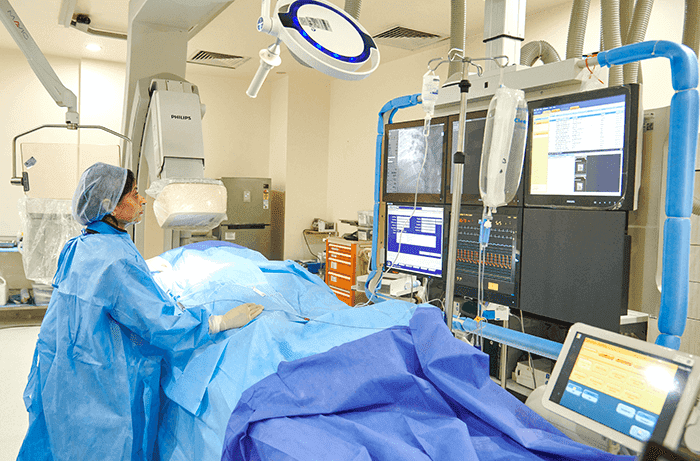×
Select Your Country
 International
International

×
Select Your Country
 International
International


A cataract is a clouding of the eye's lens that is typically prevalent in elderly people and can result in fuzzy vision, faded colors, and night blindness. Surgery to eliminate the clouding and restore normal vision is known as cataract surgery. It is a reasonably frequent procedure that, in most instances, is carried out without too many complications. Book an appointment today for Cataract Surgery treatment in India.
The other surgeries performed for the treatment of eye-related disorders include:
Glaucoma surgery
To lower intraocular pressure, surgery is required, either in the form of laser treatment or an eye incision.
Presbyopia reversal
This treatment aims for making up for your eyes' incapacity to focus on surrounding objects. Treatment options for presbyopia include receiving lens implants, refractive surgery, wearing corrective eyewear (spectacle lenses), or wearing contact lenses.
Keratomileusis
It is the surgical process of improving the cornea’s refractive condition through surgical reshaping which is known as Keratomileusis or corneal reshaping. It is known as the most common type of refractive surgery.
Conductive keratoplasty
It is the technique that utilizes radiofrequency energy in order to heat and reshape the cornea. Conductive keratoplasty refers to laser less. Radiofrequency radiation is regulated intrastromal and delivered through the use of a contact probe tip.
Radial keratotomy
It is the treatment type of refractive surgery which helps in correcting myopia and near-sightedness.
Hexagonal keratotomy
In an effort to treat hyperopia, the historical refractive surgical procedure known as the hexagonal keratotomy involves making six linear incisions into the stroma of the peripheral cornea in the shape of a hexagon.
Laser-assisted subepithelial keratomileusis (LASEK)
The laser surgical treatment known as laser-assisted subepithelial keratectomy (LASEK) is used to rectify the refractive error. LASEK is specifically used to treat myopia, hyperopia, and astigmatism (nearsightedness).
Laser-assisted in situ keratomileuses (LASIK)
It is an option for glasses or contact lenses. A specialized cutting laser is used during LASIK surgery to accurately alter the shape of the cornea, the dome-shaped transparent tissue at the front of the eye, to enhance vision.
Laser thermal keratoplasty
It is a non-contact laser refractive surgery. A ring of concentric laser burns between 6 and 7 mm in diameter is created on the cornea during the treatment using a holmium laser. These burns result in a ring of constriction on the peripheral cornea, steepening the cornea and improving near vision. Over time, this process could regress a little. It is comparable to the conductive keratoplasty (CK) operation, in which a ring of corneal burns is created similarly using a micro-needle high-frequency probe.
Photorefractive keratectomy
It uses an excimer laser to reshape the cornea without forming a flap in the cornea to treat nearsightedness (myopia), farsightedness (hyperopia), and astigmatism.
Automated lamellar keratoplasty
ALK is a surgical process used to rectify the cornea's irregular curvature, which inhibits the cornea from precisely focussing light on the retina's photosensitive layer at the rear of the eye and generating a clear image. It is recommended for vision anomalies such near- and farsightedness.
Epikeratophakia
It is a refractive surgical operation. It involves a condition when a lamellar disc from a donor cornea or commercial corneal lenticule is placed over the de-epithelialized host cornea and stitched into a groove that has been formed on the host cornea.
Contact lens implants
The implantable contact lenses are extremely thin lenses that are inserted into the eye to treat myopia, hyperopia, and astigmatism. In addition to treating a wider variety of corrective needs than is achievable with laser eye surgery, the treatment can also be reversed. This is a great substitute for laser eye surgery for people with thin or atypical corneas, Keratoconus, and dry eyes.
Anterior ciliary sclerotomy
According to the contentious Schachar theory, anterior ciliary sclerotomy entails making radial scleral incisions overlaying the ciliary body in the four oblique quadrants to restore lost zonular tension and improve accommodation. Manipal Hospitals Global is the eye center in India providing diverse treatments for eye-related disorders
Scleral reinforcement surgery (to slow down degenerative myopia)
By reducing refraction and axial length change, posterior scleral reinforcement may be a useful surgical procedure for halting the progression of myopia. However, it is important to take into account common surgical complications. The long-term safety and effectiveness must be determined by additional, well-designed research.